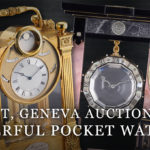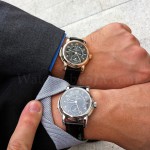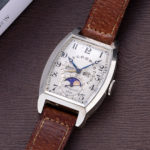Report: Geneva Fall Auctions 2025
Pocket watches and paddles.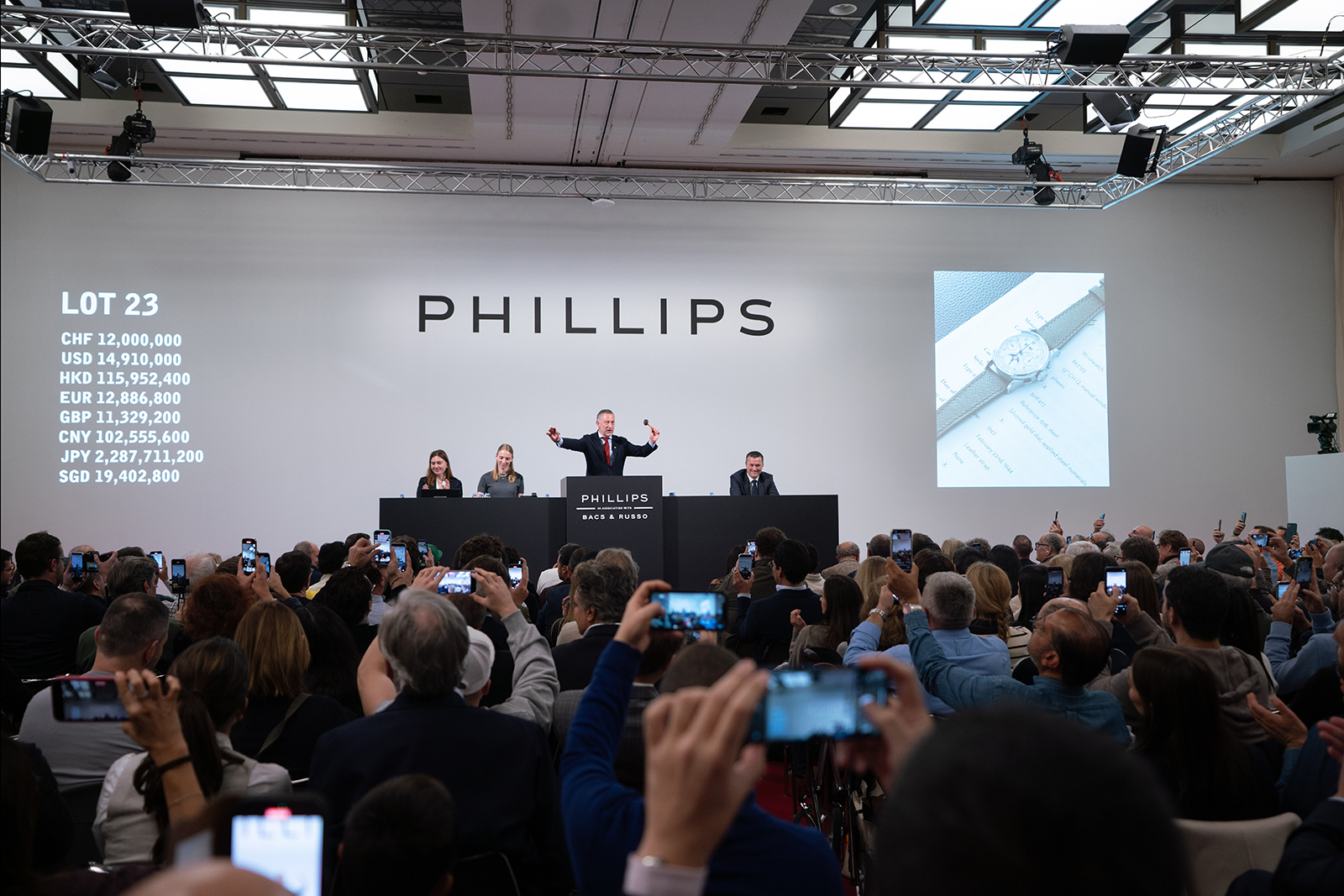
The just-concluded Geneva auction season was mostly a plateau with several striking peaks and a few lows. The peaks were marked by desirable timepieces that outperformed by far, yet shared little in common with one another in terms of style or period.
The peaks ranged from multiple F.P. Journe watches to a diamond-set Patek Philippe ref. 3424/1 “Gilbert Albert” to the Breguet four-minute tourbillon pocket watch from 1809 to the Instagram-ready Patek Philippe ref. 3970 in “salmon” with Breguet numerals. Despite such diverse taste, the small pool of bidders seemed to have one thing in common: they were all focused on a “trophy” watch.
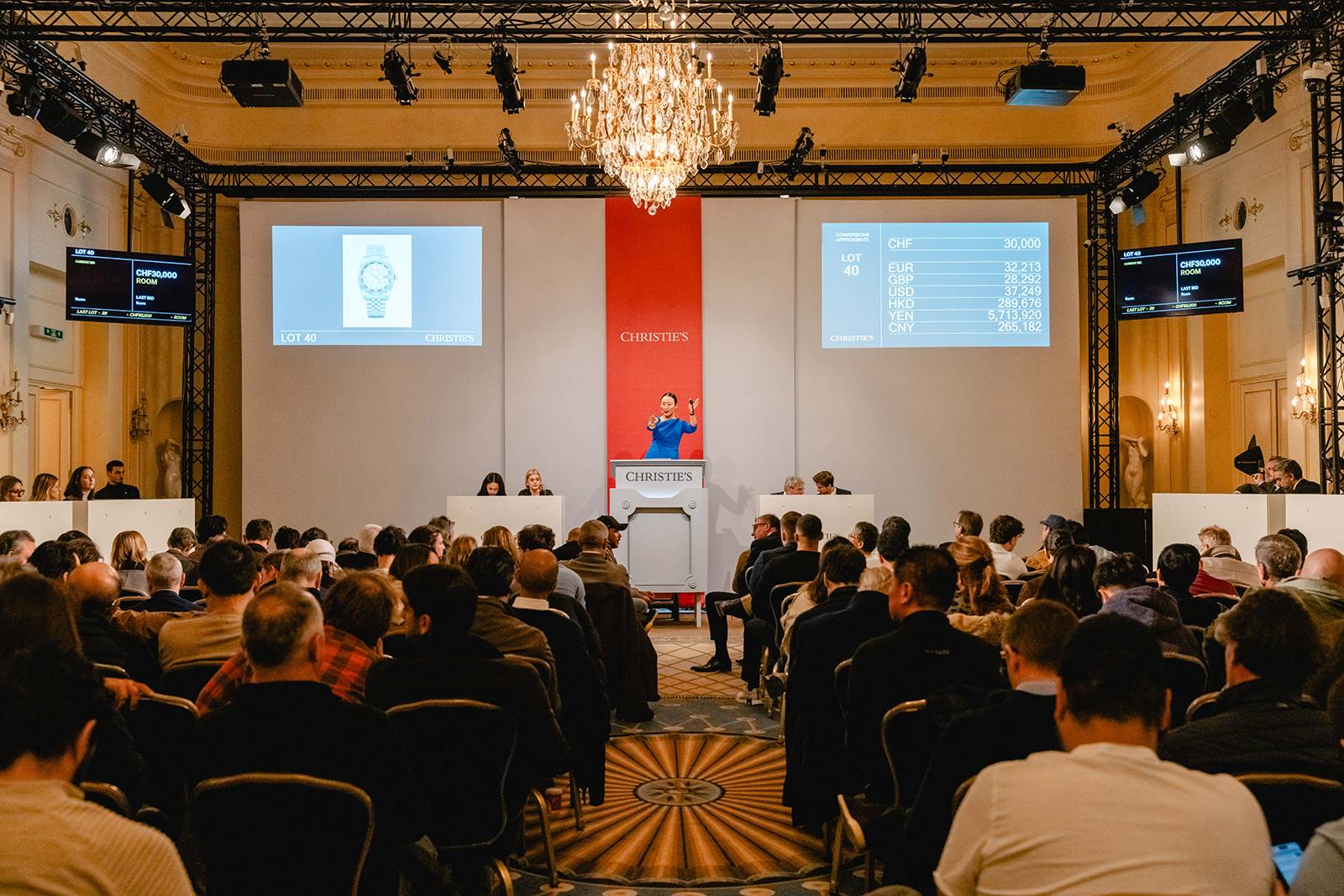
The Christie’s saleroom in the Four Seasons. Image – Christie’s
With few exceptions, contemporary watches from mainstream brands were cold, while vintage watches were mostly lukewarm – but as always there were exceptions.
An Patek Philippe ref. 570 with a black dial signed “E. Gubelin” sold for an impressive CHF419,100 including fees, or US$523,000, at Christie’s, while Phillips sold a Rolex Daytona ref. 6263 “RCO” (or “Oyster Sotto”) for an equally impressive CHF1.39 million, or US$1.73 million – close to the historical peak for the model.
A vintage watch that surprised on the downside was the 1927 Rolex Oyster worn by Mercedes Gleitze when she became the first woman to swim the English Channel in 1927 – a landmark in Rolex lore. Though it sold for CHF1.39 million, or US$1.74 million, there was just one bid for “The Companion Oyster”, which sold for one step above the low estimate.
Although 2026 is the centenary of the Oyster watch case, Rolex did not buy the watch, instead an Asian collector did. Why did it not sell for more?
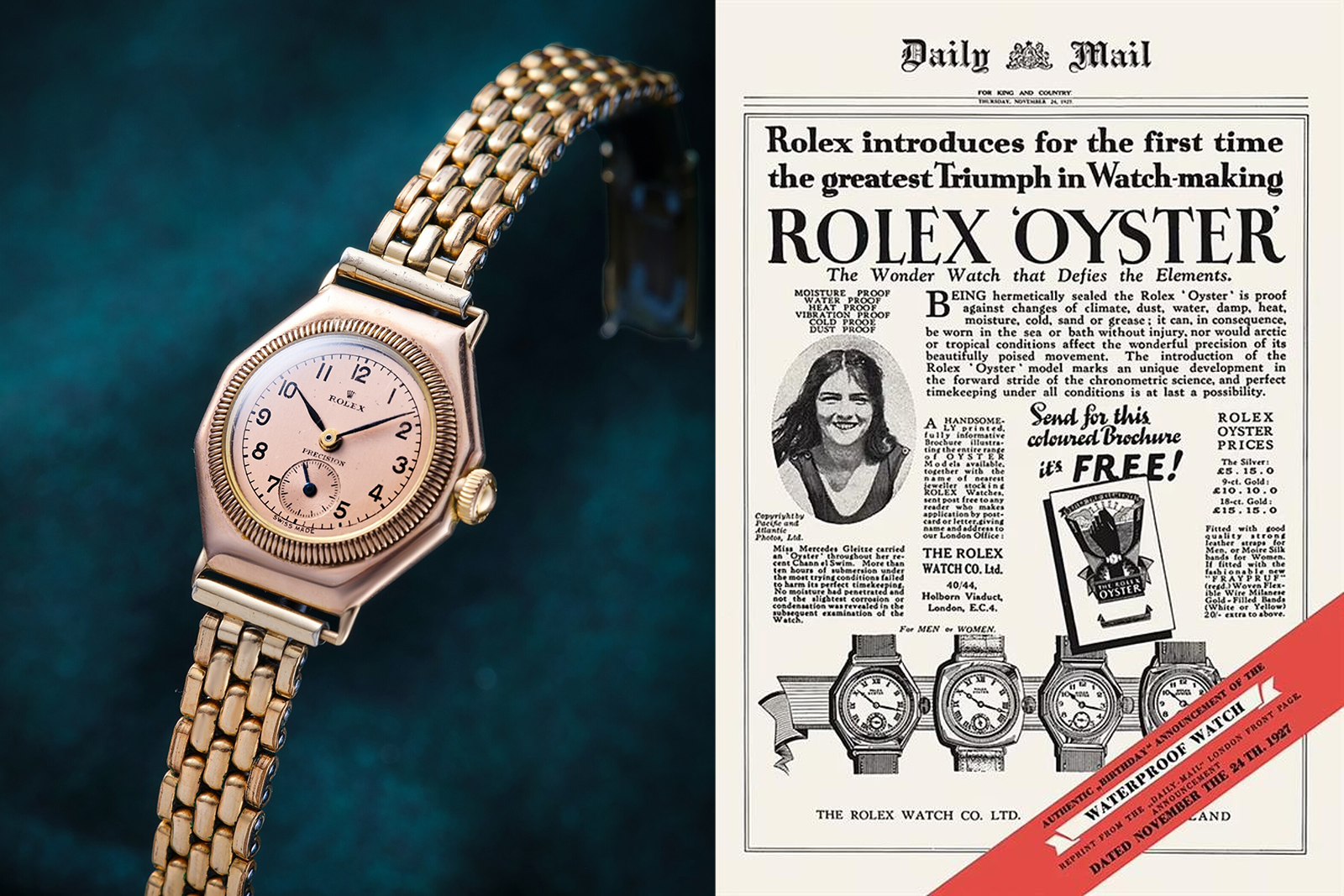
“The Companion Oyster” and a period advertisement. Image – Sotheby’s
Big numbers for pocket- and wristwatches
The headline result, however, was for a vintage watch: the Patek Philippe ref. 1518 in steel that sold for CHF14.2 million, or about US$17.6 million. The number was just shy of the reputed price that the other ref. 1518 in steel sold for a few days before at Monaco Legend.

Unsurprisingly, bidding got off to a strong start with an in-room bidder – a noted collector who travelled from far away – kicking off the action with a bid of CHF8 million, interrupting auctioneer Aurel Bacs’ opening speech.
There were only a handful of other bidders, all on the phone, with the winner represented by Nathalie Monbaron of Phillips. The winner’s identity is unknown, but the language spoken on the phone might offer a clue.
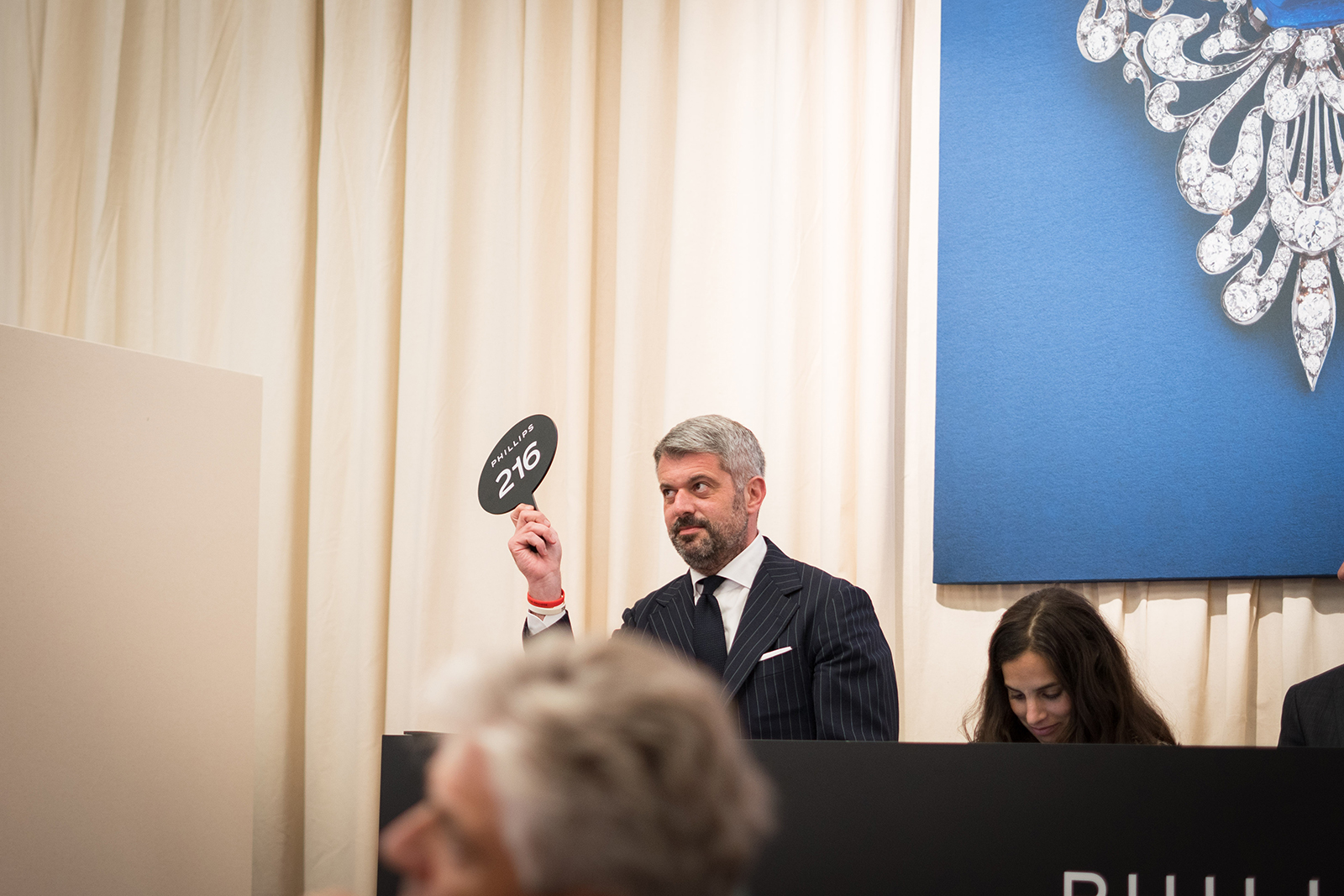
The CHF14.2 million result makes this ref. 1518 the most valuable vintage Patek Philippe wristwatch ever sold at auction, but the price felt measured rather than manic. This reflects an overall softness in the market for vintage watches, even those with the halo of the ref. 1518 in steel. The same could be felt with other notable vintage watches that went on the block this season.
While the cleaned state of the watch was evident, it wasn’t likely a factor in the price since the other known ref. 1518s in steel have all been touched up in various ways; moreover, each of the known bidders were collectors with a keen eye.

Another major result of the season was for a timepiece that is entirely different: Breguet pocket watch no. 1890 with a gilded “Hidden Mickey” dial, a four-minute tourbillon, and échappement naturel.
One of Abraham-Louis Breguet’s most important watches, no. 1890 is perhaps the only one of its type that will come to market for a long, long time. So despite the seven figure result, it was arguably a good buy.
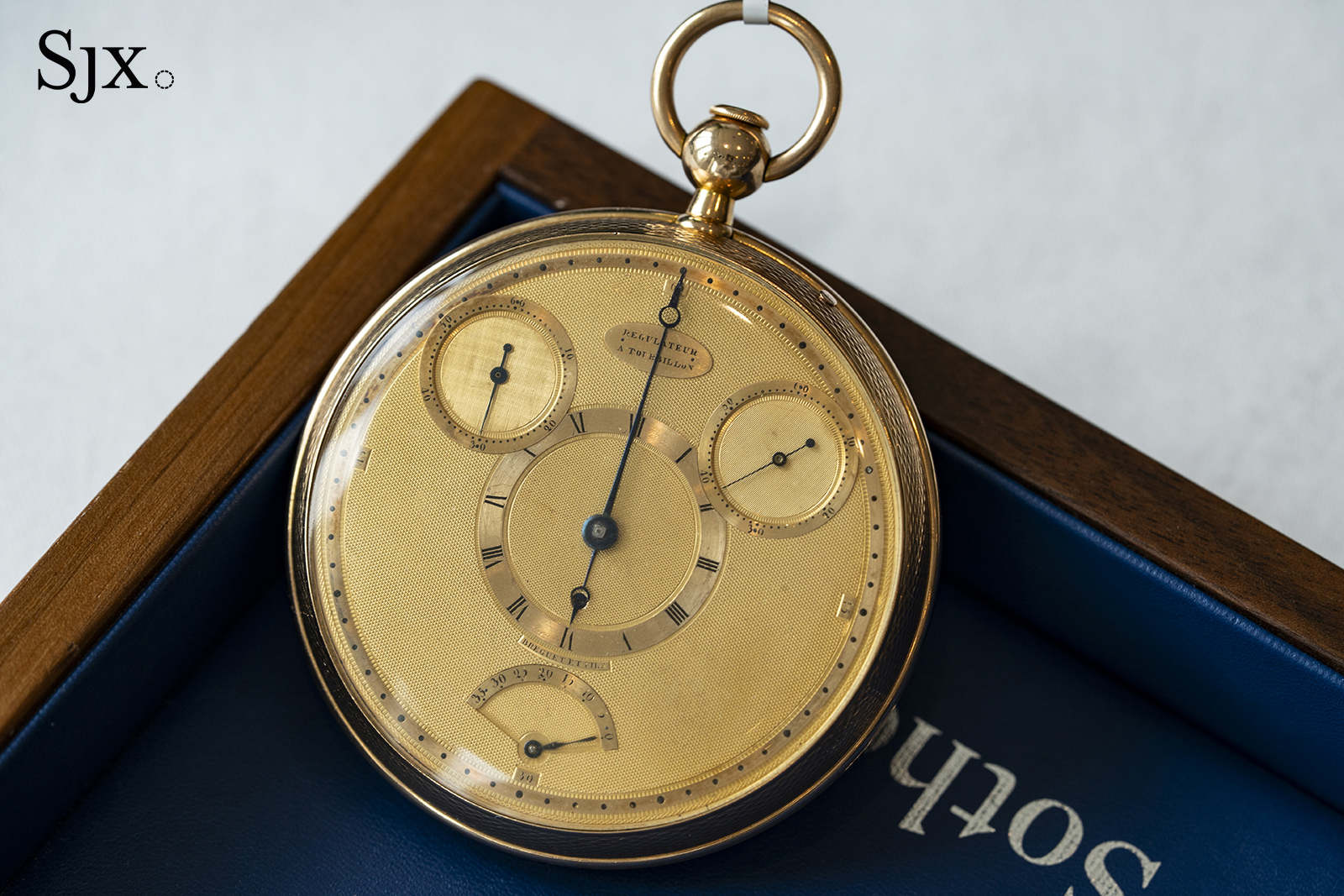
The watch sold for CHF1.88 million, or about US$2.35 million, to a buyer whose identity was almost a forgone conclusion: François-Paul Journe. Only two other bidders went up against Mr Journe, with the underbidder being an Asian collector on the phone with Sam Hines of Sotheby’s, along with an online bidder from the other side of the world.
Mr Journe had made it very clear before the sale he wanted the watch. Beyond the historical significance, no. 1890 had been owned by noted English collector Cecil Clutton and repaired by George Daniels, giving it particular personal resonance for Mr Journe, who was acquainted with both men.
Mr Journe was bidding on a surprising diverse array of watches at the various auctions over the weekend, but Breguet no. 1890 was unquestionably his greatest purchase. The watch will star in the soon-to-open F.P. Journe Le Patrimoine museum, alongside Sympathique no. 1, also a Breguet timepiece but one made by Mr Journe many moons ago.

Breguet no. 1890 also underlined the surprising number of top-grade, high-value pocket watches that went under the hammer this season. It was part of Sotheby’s Breguet thematic sale to mark the brand’s 250th anniversary, alongside several dozen Breguet pocket watches, as well as clocks and wristwatches.
The sale underscored many of the factors that shaped this season. One is the value disparity between the truly important, like the no. 1890, and the rest.
Another is the popularity of independent watchmaking. Selling for the same CHF1.88 million in the same sale – the winner was a noted collector of independent watchmaking – was a Breguet three-wheel pendulum clock – but one made in 1968 by George Daniels. The exceptional value is almost certainly entirely attributable to Daniels, since there is little in 20th century Breguet that scholars consider as important as its 19th century creations.
The craze for independent watchmakers started even before the physical auctions in Geneva. Online-only auctioneer Marteau & Co. concluded its inaugural sale a few days before the saleroom action, and achieved some strong numbers, including CHF228,000, or US$285,000, for a Daniel Roth ref. C187 double-faced tourbillon – more than the result for the same reference in pink gold at Phillips over the weekend.
The strength of demand was illustrated even more starkly over at Phillips, where some great examples of independent watchmaking went for stupendous prices, and so-so examples still achieved surprising values.
F.P. Journe Résonance Souscription no. 2 sold for CHF3.33 million, or US$4.16 million, double the ballpark value of the model before the sale. Only two phone bidders were responsible for the result, however, reflecting the niche nature of the Souscription and the lack of affordability.
Similarly rich results were achieved by F.P. Journe watches across the various auction houses, proving that the brand can defy gravity like shares of Palantir and Nvidia.
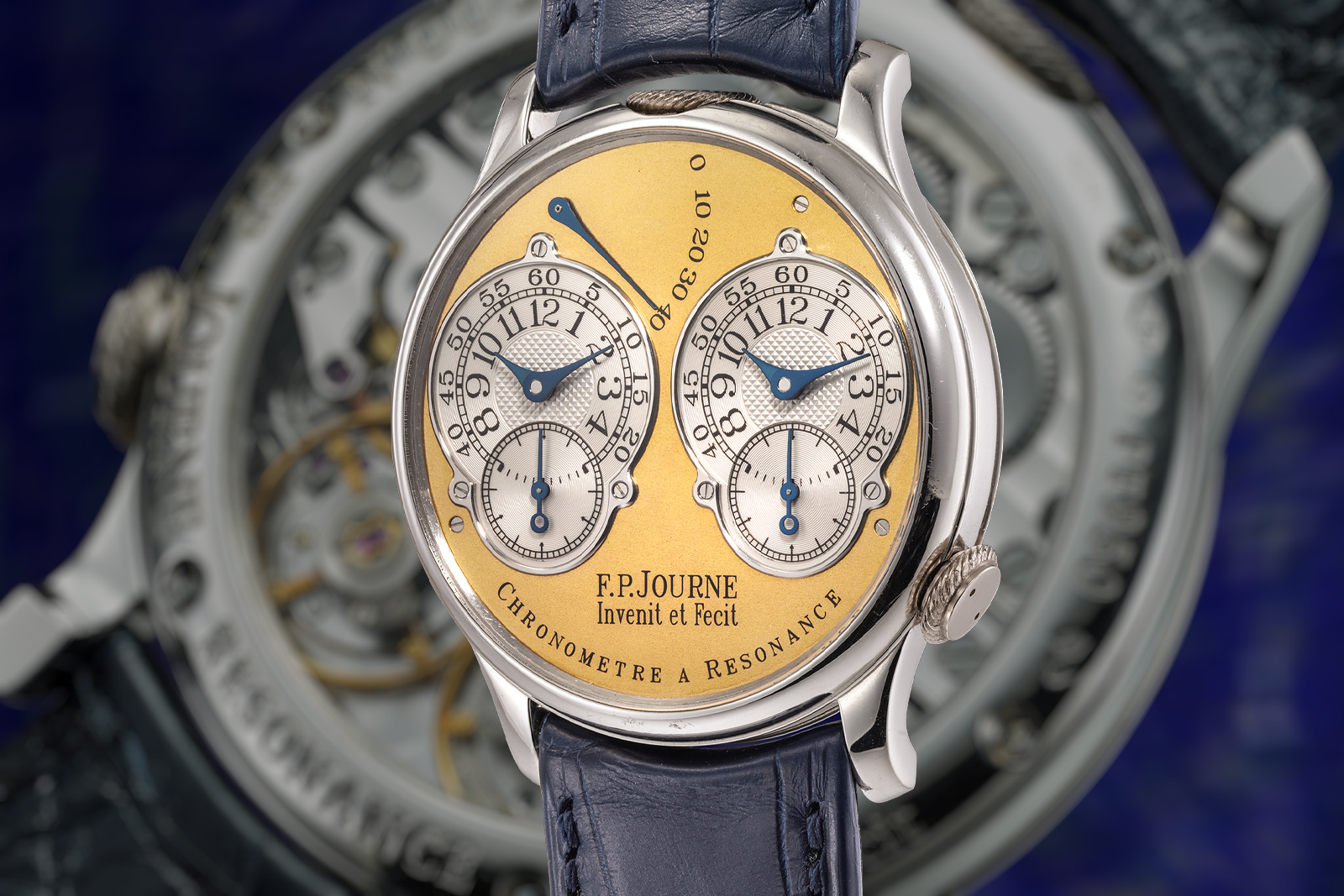
F.P. Journe Resonance Souscription no. 1. Image – Phillips
Also notable was the buying power of intellectually minded collectors, also known as nerds. A small ladies’ lapel watch, Breguet no. 1052, sold for CHF838,200 at Sotheby’s.
Though no. 1052 is a beautifully enamelled montre a tact, the result was over 16 times the high estimate. And that’s because no. 1052 is equipped with a previously unknown échappement libre à double roue, a co-axial double wheel escapement, which instantly gives it major historical and horological value.
The buying power of the nerds was arguably best demonstrated with the J. Player & Son “hyper” complication, a massive 77 mm pocket watch that was, in its day, one of the most complex timepieces ever made.
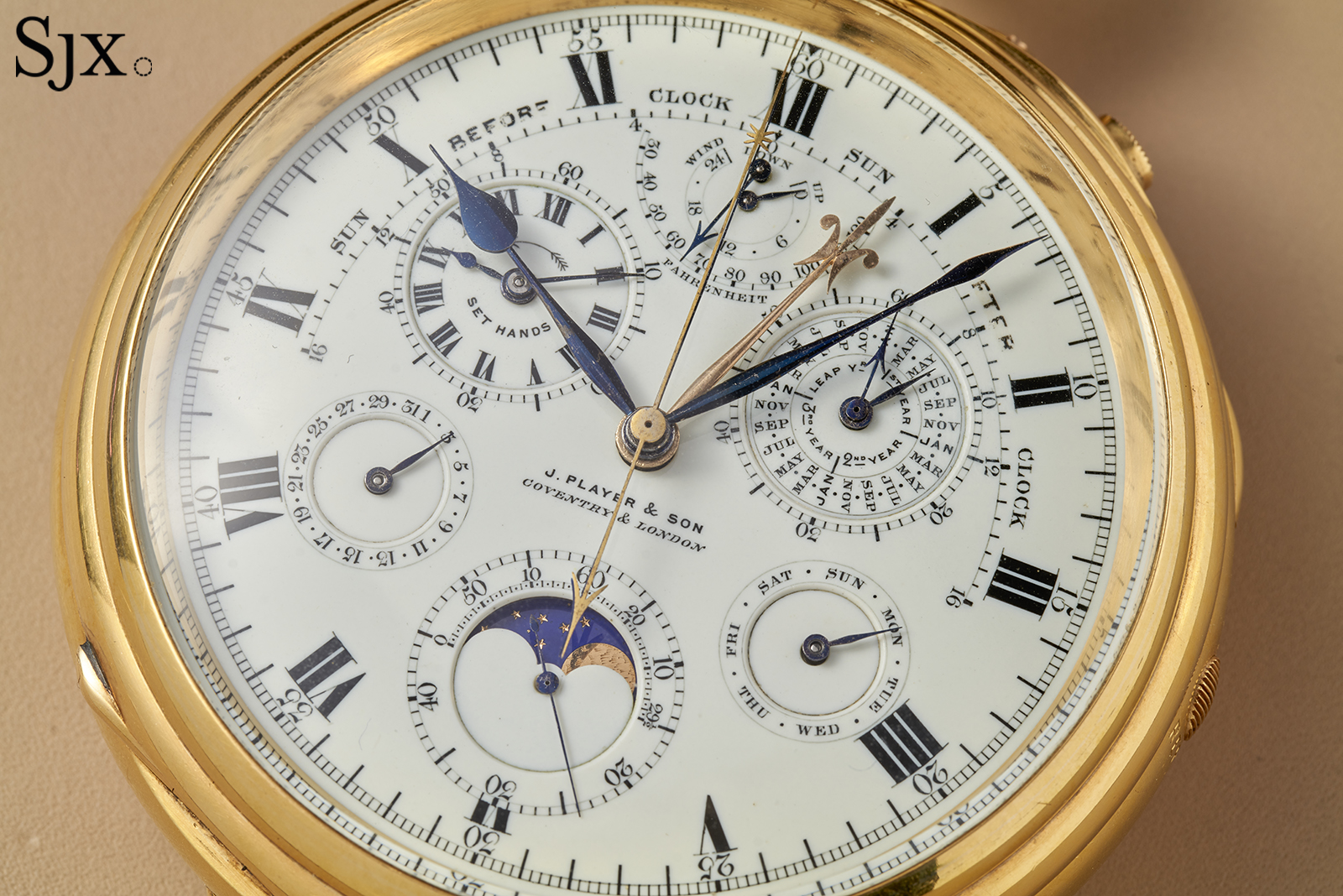
The J. Player & Sons supercomplication
With a descendant of J. Player in the saleroom, the pocket watch sold for CHF2.24 million, or about US$2.80 million at Phillips – with the two bidders seriously vying for the watch both coming from the same country.
About double the inflation-adjusted value the watch achieved when it last sold some three decades ago, the sum is even more enormous in today’s context considering collecting is dominated by wristwatches.

The Antiquorum saleroom in the Ritz-Carlton. Image – Antiquorum
Though the pocket watches and results were big, the audience is arguably narrow. Even though prices for some watches have climbed even higher than the pandemic-era boom, the pool of bidders feels smaller.
Many of the top lots across salerooms were sold to known collectors, with many underbidders being equally known. This phenomenon in turn reveals the intellectual crossover between independent watchmaking and pocket watches, since there was notable overlap in the bidders in these genres. The overlap with vintage watches is less pronounced, which perhaps explains the comparative weakness there.
Back to top.


